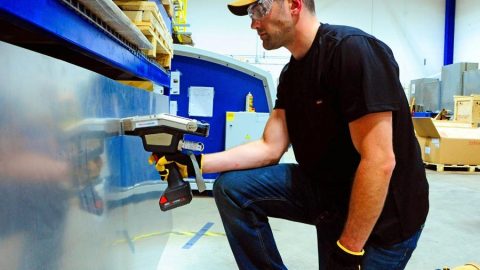
For many years, metal fabricators have always conducted costly laboratory tests to verify the compatibility of work materials. However, today, advances in elemental analysis technology have helped businesses save a lot of time and money for this stage. Here are some examples:
XRF and LIBS analyzers
Recently, XRF and LIBS analyzers are becoming increasingly easy to use and easy to use so that they can be used for fast, reliable element identification and material verification in almost every location. points, field environment, or weather conditions.
Today, computer elemental analysis techniques include: handheld X-ray fluorescence (XRF), handheld laser analysis spectroscopy (LIBS) and optical emission spectroscopy (OES). Understanding how these technologies stack up is essential for you to be confident in choosing the best technology for your business.
How do XRF, LIBS and OES work?
XRF, LIBS and OES are different types of elemental analysis techniques. Each technology, in its own way, provides results with different advantages and disadvantages. Users can choose one technology or another for a variety of reasons. First, let’s explore how each technology works.
XRF is a non-destructive analysis technique used to determine the elemental composition of a material. During the XRF process, a sample was irradiated with high-energy X-rays generated by the XRF analyzer. This causes the atoms in the sample to emit secondary (or fluorescent) X-rays, which can be detected and processed to determine which element is present. Each fluorescent X-ray is unique to the element’s elemental composition, making it an excellent tool for quantitative and quantitative analysis.
LIBS is another analytical technique used to determine elemental chemical composition. The LIBS analyzer works by using a highly focused laser to abrade the surface of the sample. A plasma is made up of electronically excited atoms and ions. When these atoms decay back to their ground state, they emit characteristic wavelengths of light, or “unique fingerprints.” Similar to XRF, LIBS is a great tool to perform quantitative and qualitative analysis.
OES is the third technique used to obtain elemental chemistry. It is similar to LIBS, but instead uses a high-voltage electrical pulse to excite atoms. Each atom in the arc / spark discharge formed on the surface of the sample emits specific lines that are selectively detected by the optical spectrometer in the OES device. The properties of these streams are used to determine the chemical composition of the sample being tested.
Productivity and Quality Office